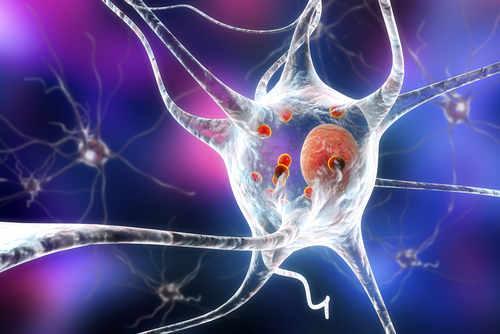ALS Hallmark, Clumps of TDP-43 Protein, Appears to Protect Nerve Cells, Study Reports

In contrast to what is often assumed, new research suggests that clumps of the protein TDP-43 — a hallmark of amyotrophic lateral sclerosis (ALS) — actually protect nerve cells rather than harm them.
If this finding confirmed in future studies, it could hugely impact how ALS and other neurodegenerative diseases are treated.
The study, “The mutational landscape of a prion-like domain,” appeared in the journal Nature Communications.
As with Alzheimer’s and Parkinson’s, protein aggregation (clumping) marks ALS. However, the presence of aggregates only weakly correlates with disease progression, and treatment approaches that have aimed to prevent or lessen clumping repeatedly fail to benefit people with Alzheimer’s or ALS.
Researchers with the Center of Genomic Regulation and the Institute of Bioengineering of Catalonia (IBEC) focused on TDP-43, a protein that normally stabilizes RNA molecules. When faulty, however, this protein aggregates inside nerve cells. Such clumping is typically seen in ALS, frontotemporal dementia, and inclusion body myositis.
Yet, whether TDP-43 becomes toxic to nerve cells because it aggregates, or if byproducts are at play, is “still very unclear and hotly debated,” the study notes.
Join the ALS forums: an online community especially for patients with Amyotrophic Lateral Sclerosis.
The scientists used an approach called systematic, or “deep,” mutagenesis to better understand the specific toxic types of TDP-43. “By studying all possible mutations in a protein, we have a much more reliable way to understand toxicity and we are excited to move on to many more proteins implicated in neurodegenerative diseases,” Benedetta Bolognesi, PhD, the study’s first author, said in a press release.
They induced more than 50,000 mutations — changing one or two amino acids, the building blocks of proteins — in the prion-like domain (PRD) of TDP-43. This protein region resembles that of infectious yeast prions, and is associated with the formation of liquid-like cellular condensates (liquid-like droplets within cells) and insoluble aggregates.
Analysis revealed that mutant proteins with increased hydrophobicity (naturally repelling water) and aggregation were less toxic in the yeast model. But mutant forms leading to liquid-like cellular condensates, most likely found around the nucleus, were more toxic than normal TDP-43.
“This is the exact opposite of what we expected,” said Ben Lehner, PhD, the study’s senior author and a professor at ICREA.
Data also showed that mutations had their strongest effects in a central “hotspot” region of 31 amino acids within the protein’s PRD, with mutations both strongly increasing and decreasing toxicity.
“Consistently, mutations that reduce hydrophobicity and the aggregation potential of TDP-43 increase the toxicity of the protein,” the investigators wrote. “Although they reduced the formation of large, solid aggregates, mutations that increase toxicity promote the formation of alternative … liquid-like TDP-43 condensates clustered at the nuclear periphery.”
They concluded: “We propose therefore that aggregation reduces the toxicity of TDP-43 to yeast cells because it titrates [adjusts the balance of] TDP-43 away from this toxic liquid-like phase … [and] propose that aggregation of TDP-43 is not harmful but actually protects cells.”
The team is now testing whether a similar protective effect can be seen in mammalian cells and nerve cells.
These results also led the researchers to suggest that treatments “promoting rather than alleviating aggregation might be the more appropriate therapeutic goal in neurodegenerative diseases.”






